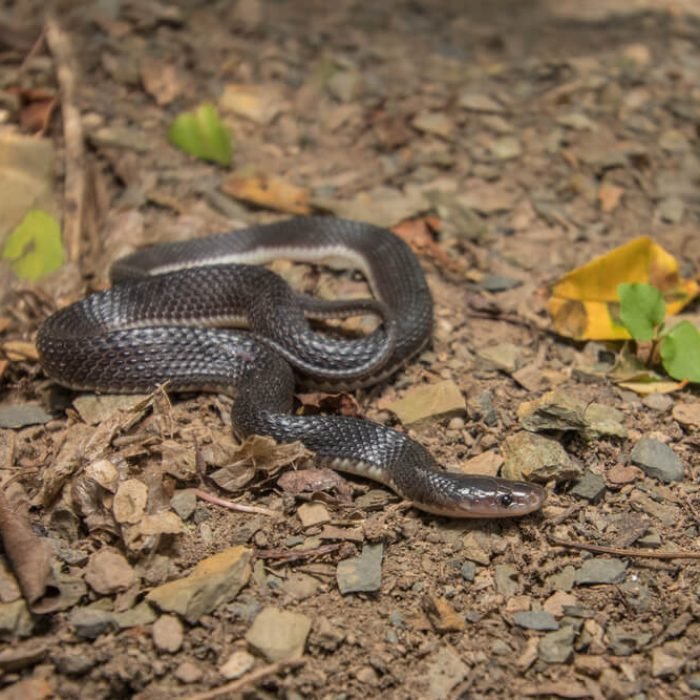Speke’s Hinged Tortoise
- Kinixys spekii
- IUCN Status: Least Concern
- Threat: harmless
- Venom/Toxin: none
- Trend: unconfirmed

General Information
All tortoises are actually turtles, as they all belong to the order of Testudines, but not all turtles are tortoises! The Spekes hinged tortoise is slightly smaller than the Bell’s hinged tortoise.
Description
It is a small tortoise with an elongated carapace (top shell), which is distinctly flattened, allowing it to seek refuge in rock crevices and under logs (the co-occurring pancake tortoise is even more flattened). Its carapace has a weak, disrupted medial keel, and posterior marginals that are neither strongly serrated nor reverted. This species has a well-developed hinge at the rear end of the upper part of its shell, permitting the protection of its rear legs after they have been retracted. The male has a notably longer tail than the female of this species, and the tails end in a spine. Females possess a flat plastron (underside shell), yet males have a more concave one.
Fun Facts
Turtles and Tortoises are known to be highly intelligent. They can dig under or plan their escape from captivity, they can learn new tricks and remember them for a very long time. Another interesting feature is that they have both an exoskeleton (the shell on the outside) and an endoskeleton (the bones on the inside).
Diet
The Spekes hinged tortoise are omnivores that have a special preference for millipedes and also feeds on snails, small flowers, leaves, grass, small invertebrates, herbs, succulents and fungi.
Reproduction
Females of the Speke’s hinged tortoise lay a small clutch of two to four eggs in the summer.
Conservation
It is categorized by the International Union for Conservation of Nature (IUCN) as, ” Least Concern “
Distribtion & Habitat
The Spekes hinged tortoise inhabits savannahs and dry bush with rocky areas. It tends to inhabit more wooded areas during the dry season, and to move out into the savannahs when the summer rains come.
Interaction With Humans
Currently it is mainly threatened by widespread collection from the wild for the illegal international trade in the species. It is also collected by local peoples for food and human population growth in the area is putting pressure on the species. Human-induced fire is also a threat. In most Zambian cultures, turtles and tortoises are revered and respected by people. It is said that one should never kill a turtle or tortoise without reason. If you are to come across one stuck upside down along your path, it is said to be good luck to help it and turn it over to let it goon its way and that doing the opposite or leaving it stuck is very bad luck and karma.
Share:
- Phylum: Chordata
- Class: Reptilia
- Order: Testudines
- Suborder: Cryptodira
- Family: Testudinidae
- Genus: Kinixys
- Length: up to 20 cm











